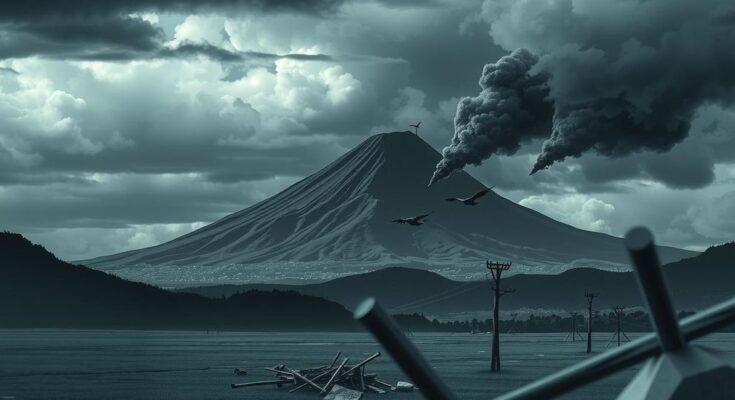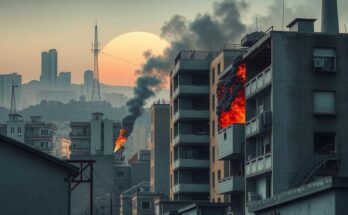Fighting in Goma, eastern DRC, remains intense as Rwandan-backed M23 rebels claim control. U.N. officials report ongoing combat in all neighborhoods, with artillery strikes hitting civilian areas. The situation worsens with disruptions in essential services, prompting a partial evacuation of non-essential U.N. staff. The humanitarian impact is dire, highlighting the urgent need for international intervention.
Fighting continues in Goma, the largest city in eastern Democratic Republic of Congo (DRC), as Rwandan-backed M23 rebels assert control over the area. Bruno Lemarquis, the senior U.N. official in Congo, stated during a video briefing that combat is active across all neighborhoods. The clashes have escalated, involving direct exchanges of fire between Congolese forces and the Rwandan military.
Rebel forces, led by the M23 militia, initially entered Goma on Monday, exacerbating an ongoing conflict that has persisted for over a decade. The situation has been described as volatile and dangerous, according to the U.N. peacekeeping chief, Jean-Pierre Lacroix, who indicated the presence of Rwandan troops in the city supporting the rebels.
Lemarquis reported artillery fire that struck a maternity hospital in Goma, resulting in casualties among civilians, including newborns and pregnant women. He noted that the reportedly chaotic scene on the ground has led to significant disruption, including cuts to internet and phone services and interruptions in water and electricity supplies.
The U.N. maintains nearly 11,000 peacekeepers and a civilian team in the DRC, mostly concentrated in the eastern region. In light of escalating violence, non-essential staff are being evacuated to Uganda for safety.
This ongoing crisis in Goma represents the culmination of long-standing tensions exacerbated by external influences, illustrating the necessity for concerted international attention and action to alleviate human suffering and restore stability in the region.
The Democratic Republic of Congo has experienced decades of unrest, particularly in the eastern regions such as Goma. The M23 militia, primarily comprised of ethnic Tutsi fighters, has been involved in numerous conflicts with Congolese forces and has received alleged backing from Rwanda. The city of Goma holds strategic importance due to its proximity to the Rwandan border and serves as a critical area for humanitarian aid due to the significant number of displaced persons. Recent escalations have prompted renewed concern for civilian safety and the effectiveness of U.N. peacekeeping operations. The U.N. peacekeepers have been in the DRC to help stabilize the situation, but the ongoing violence poses substantial challenges to their mission. The local population continues to suffer amidst the conflict, with disruptions to essential services and the risk of further casualties in areas affected by combat operations. Understanding the historical context of the DRC’s conflicts is essential for addressing the complexity of the ongoing situation in Goma, which requires international attention to provide relief and encourage a sustainable resolution. The role of external actors, such as Rwanda, in reinforcing rebel factions adds another layer to the conflict, complicating peace efforts and highlighting the need for diplomatic interventions. Lastly, the humanitarian fallout from such conflicts necessitates immediate and comprehensive responses from global aid agencies, while also emphasizing the urgency of restoring peace and stability within the region.
In summary, the ongoing fighting in Goma highlights the resurgence of conflict in the DRC, exacerbated by the involvement of Rwandan troops supporting M23 rebels. Civilians bear the brunt of this escalation, facing dangers within their communities and disruptions to essential services. Amid this volatile situation, the U.N. mission’s role remains critical for peacekeeping, as international attention is needed to address the humanitarian crisis and work towards a resolution. The need for collaborative efforts to restore stability in the region cannot be overstated. Furthermore, the DRC’s persistent challenges impel the need for a multi-faceted response that addresses both immediate humanitarian needs and underlying issues fueling conflict. The fate of Goma and its people speaks to a broader crisis that extends beyond the city’s borders, calling for proactive measures to ensure lasting peace.
Original Source: www.usnews.com




